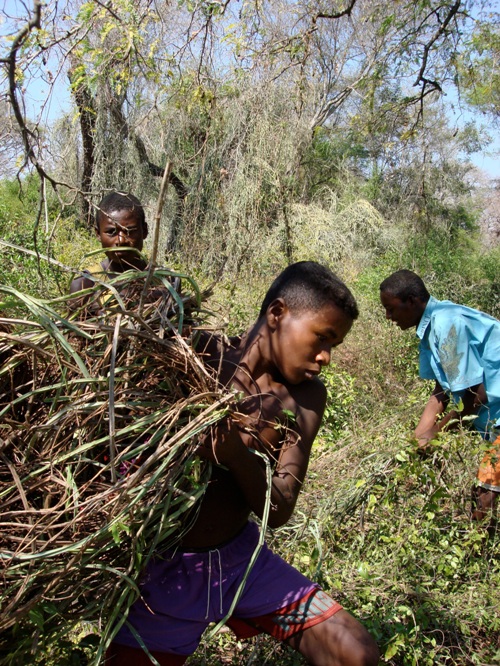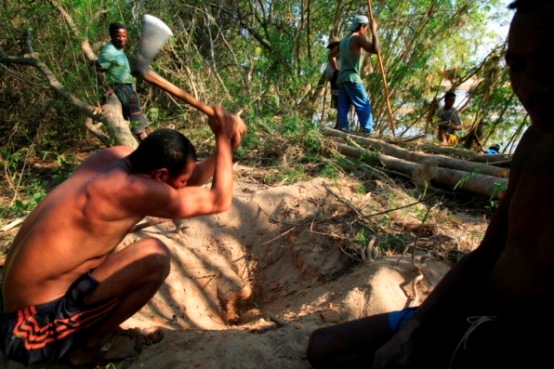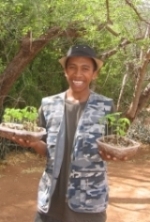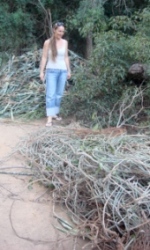Forest Management |
The forest has had several managers: Helen Crowley (1992-3), then recently Hajarimanitra Rambeloarivony and Sahoby Raharison. It is currently managed by Claire de Heaulme Foulon and Didier Foulon. Management involves patrolling to prevent poaching or grazing, nurseries of endemic species, and above all the removal of invasive plants species.

© Cyril Rouso, www.ruoso-grundman.com
The chief invasive species is Cissus quadrangularis, a smothering euphorb vine originating from India or Africa. This necessitates hand weeding of large areas. Sisal, planted as cattle-proof boundaries, also invades the forest, as does “mother-in-law’s toungue” (Sanseveria sp.). A native Combretum liana is giving cause for concern, covering trees on the sunlit river bank.
Leucaena leucocephala, a quick-growing tree, was deliberately planted for cattle browse, but has been removed as toxic to lemurs. (This is discussed in the research section).
Updates from Berenty's Reserve Manager |
Periodically, we receive news from the Reserve Manager to keep us informed of conditions at the Reserve. You can find these news bulletins and more available in the Download Repository.
Excerpt from News from Berenty (October 2009):
Last time, we talk about sifakas disappearing in the spiny forest fragments, and now there is a bit interesting new, because Fefy the students working with Bruno at this forest type find one troop (composed by 3 individuals) from the Analalava part. However, according to the Bruno's observation on 2007, there must be more than 3 animals if no Sifakas were missed. We don't want to conclude that some sifakas were hunted or taken off from the forest, so we continue visiting the Analalava part.
All of researchers' notice will help us for the management and to take measure for the future.
That's about the sifaka at the spiny forest, but let's talk now about the Malaza forest. Few years ago, the wide trail inside the Malaza was swept regularly. Actually the over way round is happening, one team of 10 men are covering the trail with the litter which were built-up beside. So, if you were already been at Berenty before, and come back here next time, you will feel the difference....
For the full news bulleting and others like this, visit the Downloads Repository.
 |
|---|
_MASTimg_BreakfastMale_(DC).jpg)
_MASTimg_BerentyWebsiteMasthead.jpg)




 Sahoby Raharison with tamarind seedlings
Sahoby Raharison with tamarind seedlings Claire Foulon with cleared cissus
Claire Foulon with cleared cissus Haja Rambeloarivony at work © photo by Cyril Rouso
Haja Rambeloarivony at work © photo by Cyril Rouso